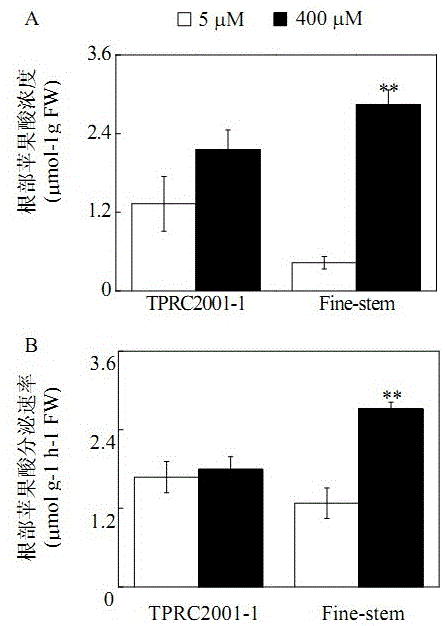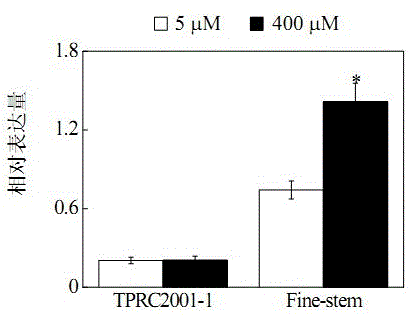Cloning and application of an important gene shmdh1 for tolerance to manganese toxicity in plants
A plant, manganese-tolerant technology, applied in the field of plant biology
- Summary
- Abstract
- Description
- Claims
- Application Information
AI Technical Summary
Problems solved by technology
Method used
Image
Examples
Embodiment 1
[0047] ShMDH1 gene cloning
[0048] 1, ShMDH1 gene cloning
[0049] According to protein two-dimensional electrophoresis, a protein up-regulated by manganese poisoning was identified as malate dehydrogenase. Then, according to the reported nucleotide sequences of soybean (XM_003527163), alfalfa (AF020271), japonicus japonicus (BT146072) and castor (XM_002524216) genes for homology comparison, upstream homologous primers were designed in highly conserved regions5 '-ATTATTGCCGCTGAGGTTTTTCAAGA-3'(SEQIDNO:3) and the downstream homologous primer 5'-GATTCCCTTCAAGCAAGCATCG-3'(SEQIDNO:4), using the TRIzol method to extract total RNA from the root system of the Manganese-tolerant genotype Fine-stem of Stylosmanthus styloides, and then reverse transcription After forming cDNA, it was used as a template for PCR amplification. The PCR reaction system was 20 μL, including 0.5 μL of 10 μM upstream and downstream primers, 2 μL of 10×PCR buffer, 1.6 μL of 2.5 mMdNTP, 0.12 μL of Ex-Taq (TAK...
Embodiment 2
[0071] Research on genetically modified materials
[0072] 1. Obtaining genetically modified materials
[0073] 1) Obtaining transgenic Arabidopsis plants
[0074] will construct a good overexpression ShMDH1 The vector plasmid was transformed into Agrobacterium tumefaciens Gv3101, and transgenic Arabidopsis plants were obtained by Agrobacterium-mediated Arabidopsis inflorescence transfection method.
[0075] 2) Obtaining of transgenic yeast strains
[0076] Referring to the SCeasycomp transformation kit (Invitrogen Company) method, the constructed yeast expression ShMDH1 Vector plasmid and pYES2 empty vector were transformed into yeast INVSC1 (Invitrogen).
[0077] 2. Detection of genetically modified materials
[0078] 1) Detection of transgenic Arabidopsis plants
[0079] After the T1 generation Arabidopsis seeds were screened for hygromycin resistance, the T1 generation transgenic plants were obtained, and the seeds were harvested; the T2 generation seeds were screene...
PUM
 Login to View More
Login to View More Abstract
Description
Claims
Application Information
 Login to View More
Login to View More - R&D
- Intellectual Property
- Life Sciences
- Materials
- Tech Scout
- Unparalleled Data Quality
- Higher Quality Content
- 60% Fewer Hallucinations
Browse by: Latest US Patents, China's latest patents, Technical Efficacy Thesaurus, Application Domain, Technology Topic, Popular Technical Reports.
© 2025 PatSnap. All rights reserved.Legal|Privacy policy|Modern Slavery Act Transparency Statement|Sitemap|About US| Contact US: help@patsnap.com



